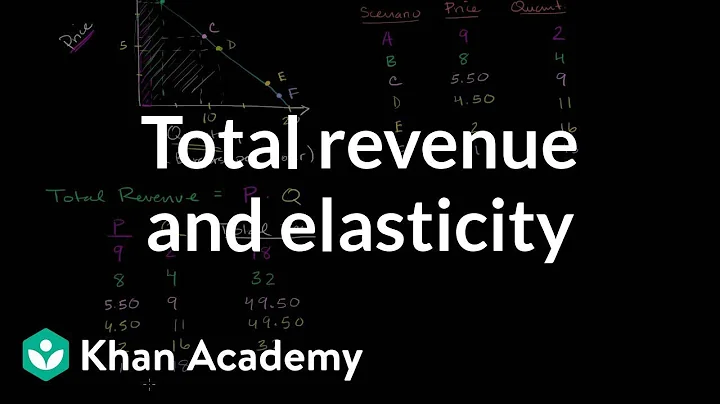How does total revenue relate to elasticity of demand?
Price and total revenue have a negative relationship when demand is elastic (price elasticity > 1), which means that increases in price will lead to decreases in total revenue. Price changes will not affect total revenue when the demand is unit elastic (price elasticity = 1).
If an increase in price causes an increase in total revenue, then demand can be said to be inelastic, since the increase in price does not have a large impact on quantity demanded.
For an inelastic good, a one percent change in the price results in a less than one percent change in the quantity demanded. A price increase for an inelastic good will increase total revenue while a price decrease for an inelastic good decreases total revenue.
There is a direct relationship between marginal demand and the price elasticity of demand. This is the change in consumption of goods and services based on their prices. Positive marginal revenue means demand is elastic. It is negative when marginal revenue is negative.
There is a consistent relationship between the price elasticity of demand and total revenue: a price decline increases total revenue if demand is elastic, has no effect on total revenue if demand is unit elastic, and decrease total revenue if demand is inelastic. the elasticity is the same all along the demand curve.
c) If demand is perfectly inelastic, then revenue is the same at any price.
b) If demand is price elastic, then decreasing price will increase revenue.
If demand for a good is elastic (the price elasticity of demand is greater than 1), an increase in price reduces total revenue. In this case, the quantity effect is stronger than the price effect. demand is less than 1), a higher price increases total revenue.
If demand is inelastic, a price decrease will decrease total revenue, while an increase in price will increase total revenue. If demand is unit elastic, total revenue remains constant when prices rise or fall. measures the responsiveness of sellers to changes in the price of a product.
When the elasticity is less than one (represented above by the blue regions), demand is considered inelastic and lowering the price leads to a decrease in revenue. Revenue is maximized when the elasticity is equal to one.
How do you find marginal revenue from elasticity of demand?
In other words, MR is less than price. MR may be expressed as MR = dTR/dQ, where the dTR with respect to dQ is the first derivative of the total revenue function. The above formula is very useful when the demand function has a known constant price elasticity.
If demand is price elastic, a price increase reduces total revenue and a price decrease increases total revenue. You just studied 8 terms!

If demand is elastic at a given price level, then should a company cut its price, the percentage drop in price will result in an even larger percentage increase in the quantity sold—thus raising total revenue.
When demand is inelastic, a decrease in price will result in an increase in total revenue. When demand is unit elastic, an increase in price will result in an increase in total revenue. When demand is unit elastic, a decrease in price will result in no change in total revenue.
What Is a Total Revenue Test? A total revenue test approximates the price elasticity of demand by measuring the change in total revenue from a change in the price of a product or service.
There is no total-revenue test for price elasticity of supply because price and total revenue move in the same direction regardless of the degree of price elasticity of supply.
When the price changes, total revenue also changes. But a rise in price doesn't always increase total revenue. , a price rise increases total revenue, and vice versa. a 1 percent price cut increases the quantity sold by more than 1 percent, and total revenue increases.
When the price changes, total revenue also changes. But a rise in price doesn't always increase total revenue. , a price rise increases total revenue, and vice versa. a 1 percent price cut increases the quantity sold by more than 1 percent, and total revenue increases.
When demand is elastic, an increase in price will result in an increase in total revenue. When demand is elastic, a decrease in price will result in an increase in total revenue. When demand is inelastic, an increase in price will result in an increase in total revenue.
Inelastic demand is when a buyer's demand for a product does not change as much as its change in price. When price increases by 20% and demand decreases by only 1%, demand is said to be inelastic.
Which one of the following changes in price will cause total revenue to increase?
Answer and Explanation: a. Price falls, and demand is elastic. If the demand is elastic and the price decreases, the total revenue will increase.